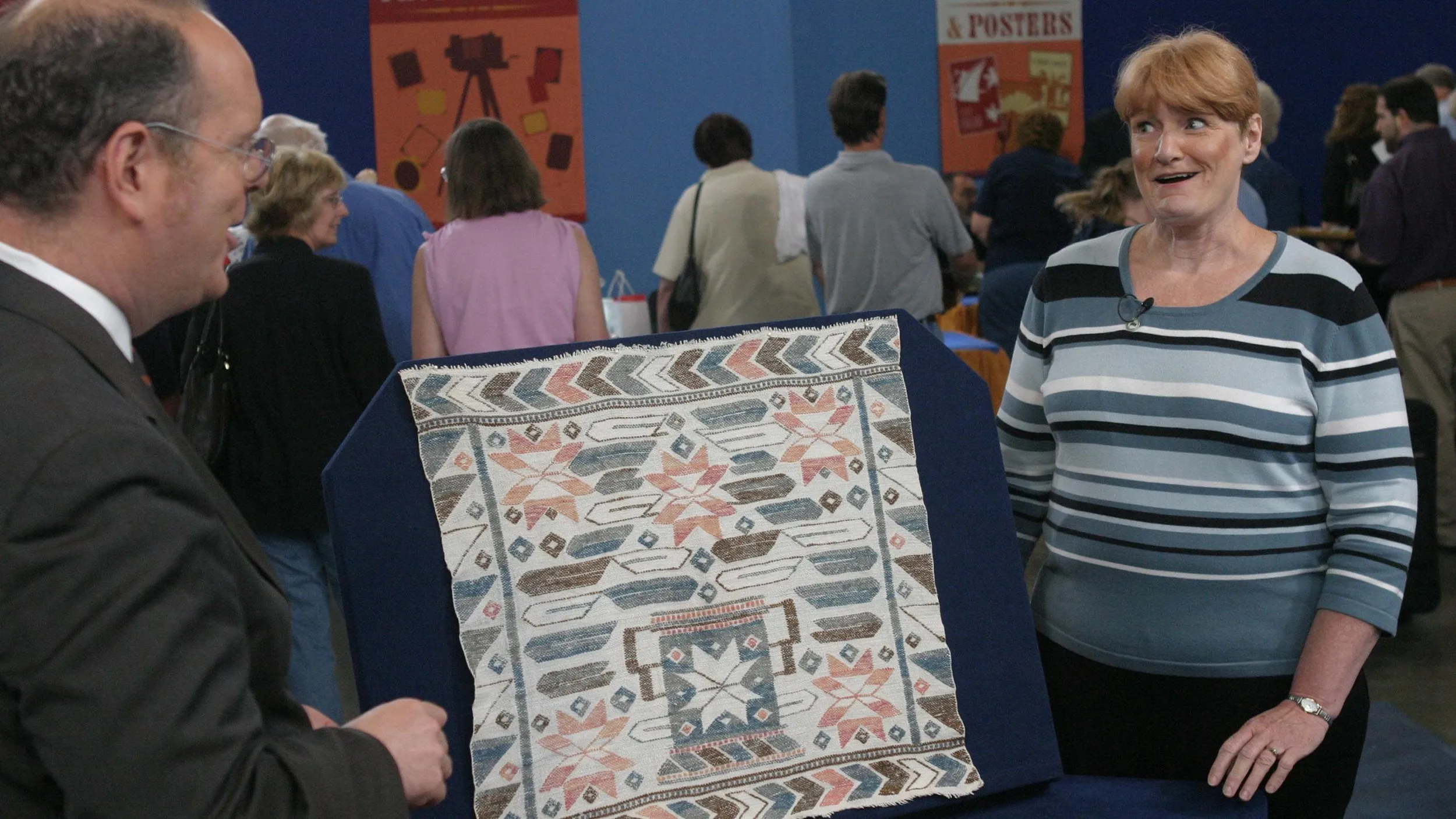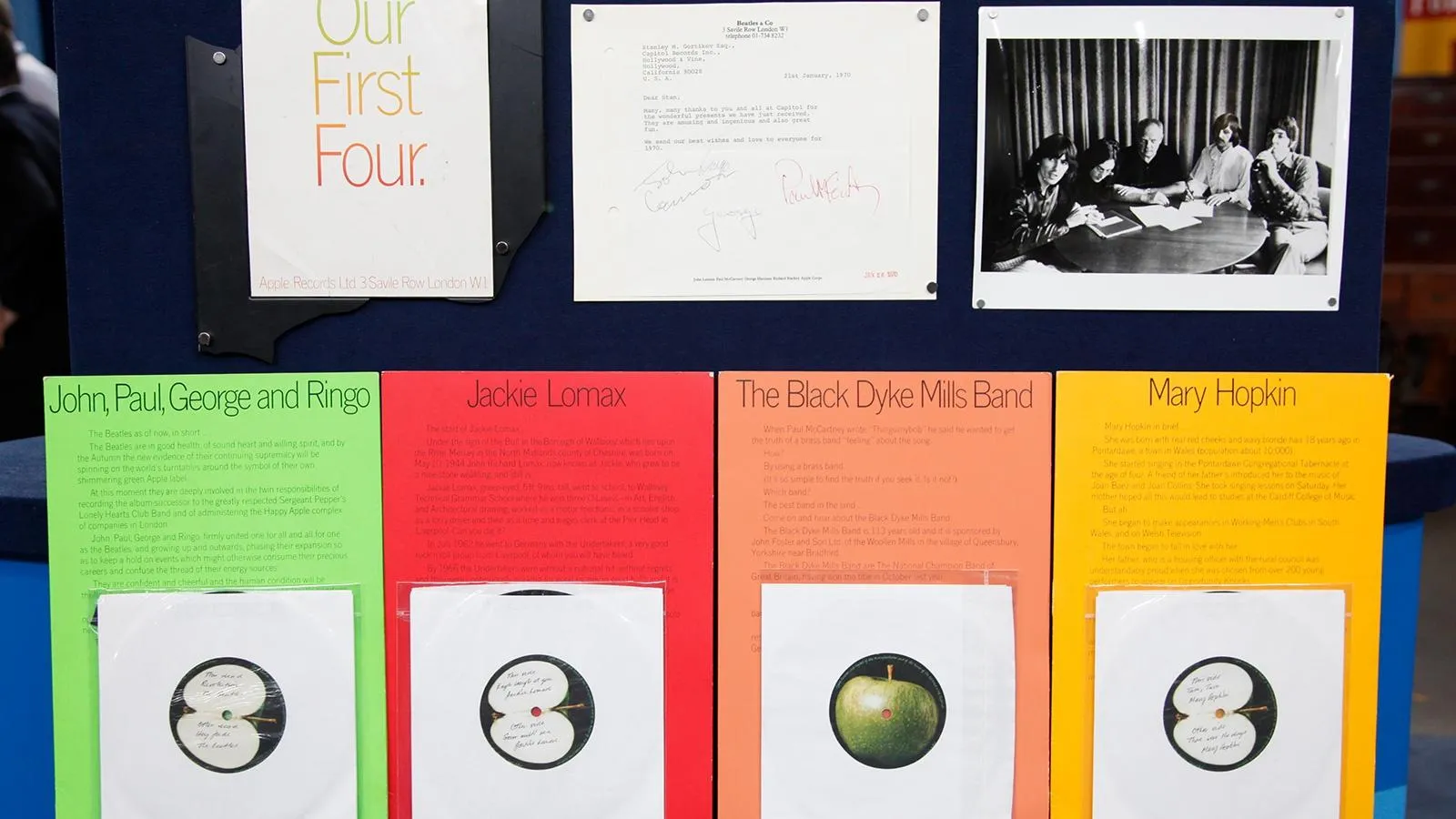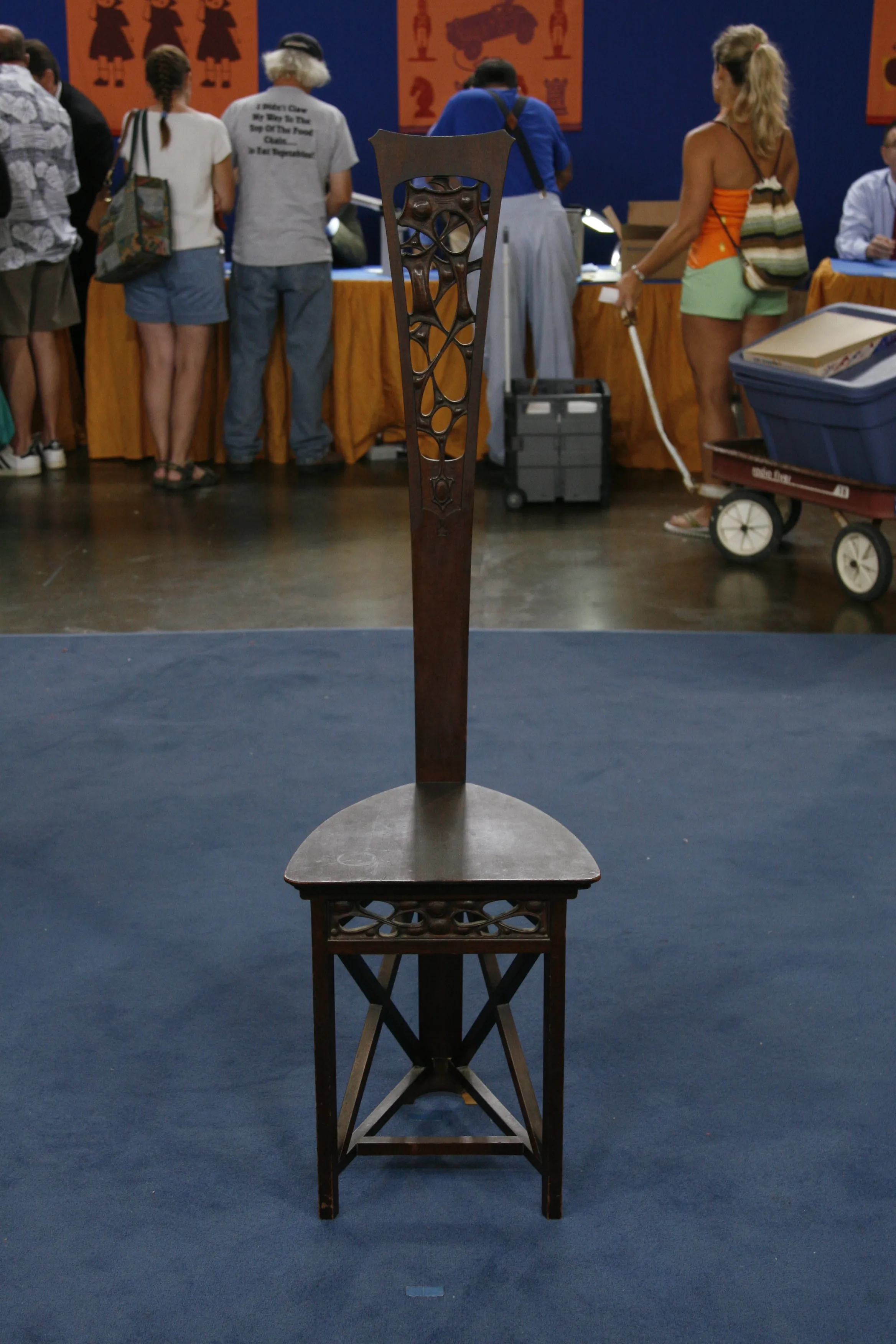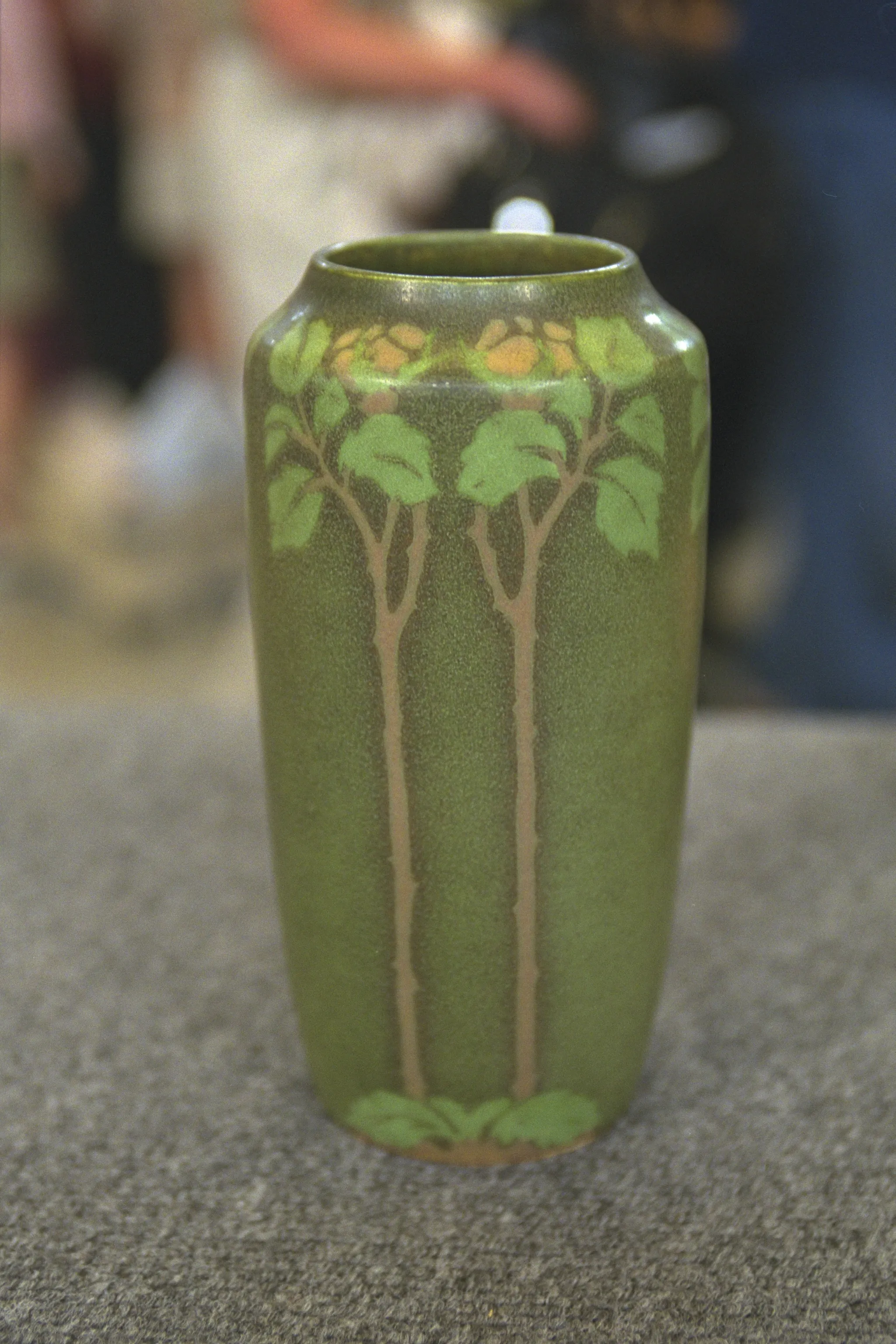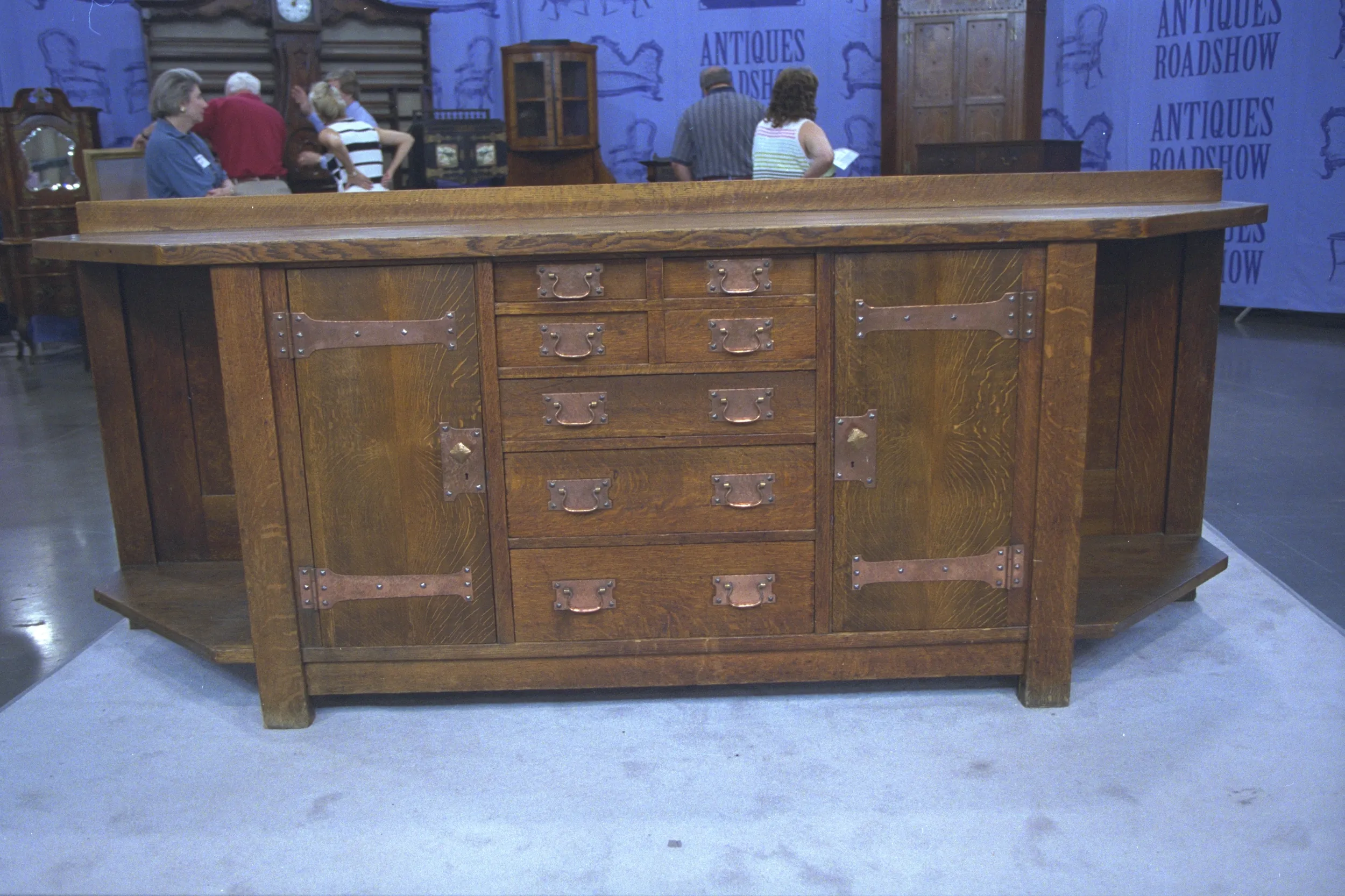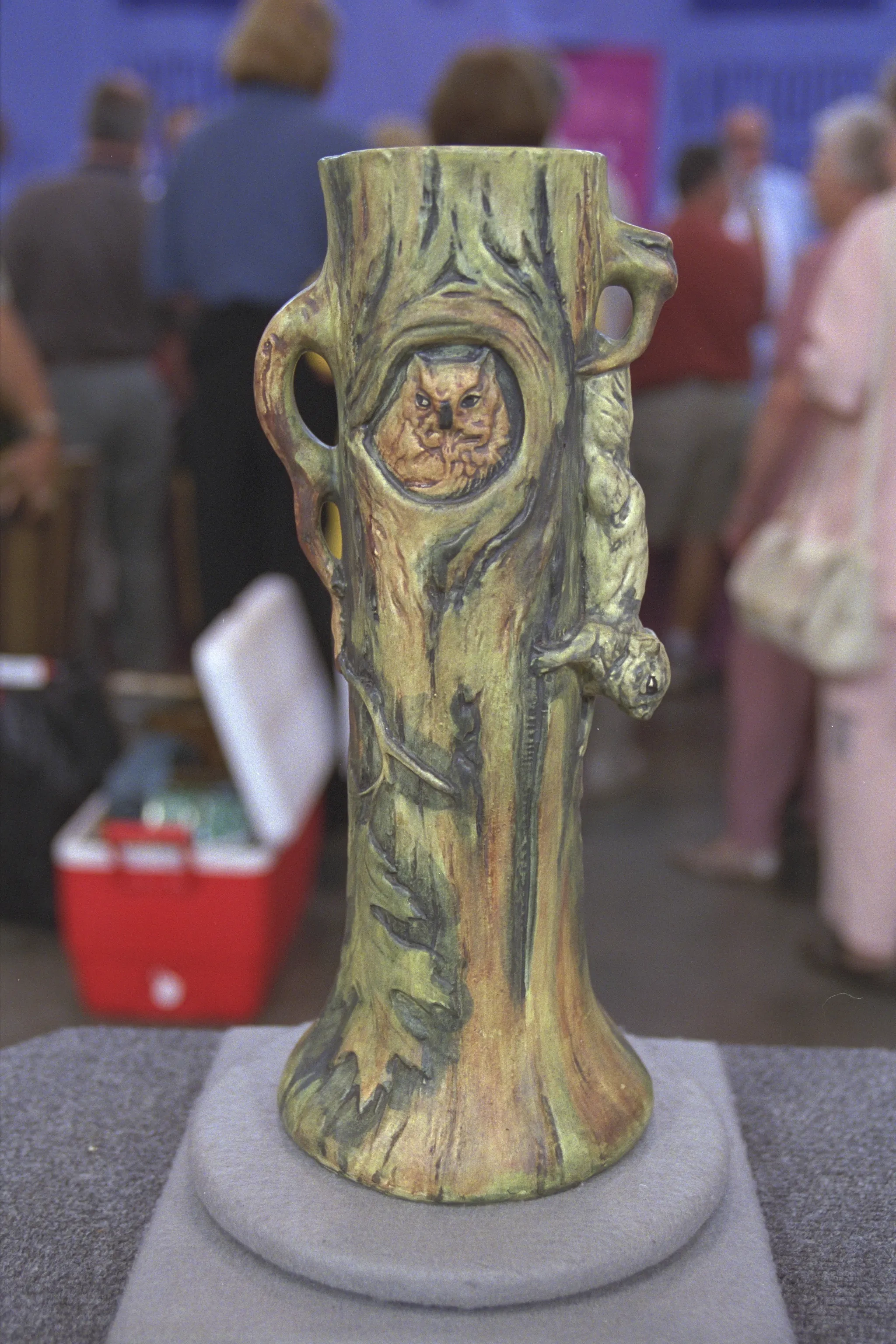GUEST: It's my sister's chair. She purchased it from some friends of mine in the late '70s. After that, she was looking at an antique trader, noticed another chair in there called a lost treasure.
APPRAISER: Ah.
GUEST: And realized maybe she had a treasure of her own.
APPRAISER: You and your sister both know this is a Gustav Stickley chair.
GUEST: Yes.
APPRAISER: Because it's marked, and we'll look at the mark in just a second.
GUEST: Right.
APPRAISER: Gustav Stickley is known for very scaled-down and simple, heavy furniture. Well, this is not so scaled-down, because it's got this inlay decoration across the back.
GUEST: Okay.
APPRAISER: And it's also rather light, compared to a lot of his pieces. The lines are a lot thinner, and the pieces of wood are a lot thinner. That will tell you this is a special piece. Harvey Ellis was a designer, he was an Englishman who worked for Gustav Stickley for not much more than a year. He was an alcoholic, and he died in 1904.
GUEST: Oh, my.
APPRAISER: But he brought this rather decorative European Arts and Crafts style, and it modified Gustav Stickley's more severe look. And so these inlays which are on the back slats have inlays of pewter, copper, rare woods. Now, your sister mentioned there was some repair to the inlay?
GUEST: I believe she said this one was a repair, and possibly a crushed-up penny that was put in there.
APPRAISER: It was just kind of flattened out and banged into place?
GUEST: Flattened-out penny, yeah.
APPRAISER: That's not unusual-- it's not the end of the world. We know it's an early chair because Harvey Ellis died in 1904. There are other ways we know it's an early piece of Gustav Stickley furniture.
GUEST: Okay.
APPRAISER: If you look inside the chair, you see these holes?
GUEST: Yup.
APPRAISER: This had a cane seat foundation that a cushion would rest on. Later pieces of Gustav Stickley would have drop-in seats or spring seats. Furthermore, this piece has an earlier mark on it, which we'll look here. It's inside of a box, so it's a decal. When you see a box around the mark, you know it's an earlier piece of furniture. Another indication that it's early is this finish, which is really beautiful. And it's, it makes a huge difference in the look, the quality, and the value of the chair. See the difference of the color between the back of the arm and the bottom of the arm?
GUEST: Yup.
APPRAISER: That's because of normal wear-- that's not a bad thing. It shows this chair has not been cleaned. If anybody refinished this chair, they would have evened out the color on the arms.
GUEST: Okay.
APPRAISER: But if we turn the chair around... The color on the back is this rich, chocolatey-brown fumed finish. It's really what you want to see on a Harvey Ellis chair and makes a vast difference in price. Retail, today's market for this chair, $40,000 to $50,000.
GUEST: Oh, my word-- that's awesome.
APPRAISER: Several things would make it worth less. If it was refinished, $10,000 to $15,000. (exhales softly) Lighter finish, $25,000 to $35,000. With this color, $40,000 to $50,000 for this chair.
GUEST: Oh, my word-- that's awesome.

